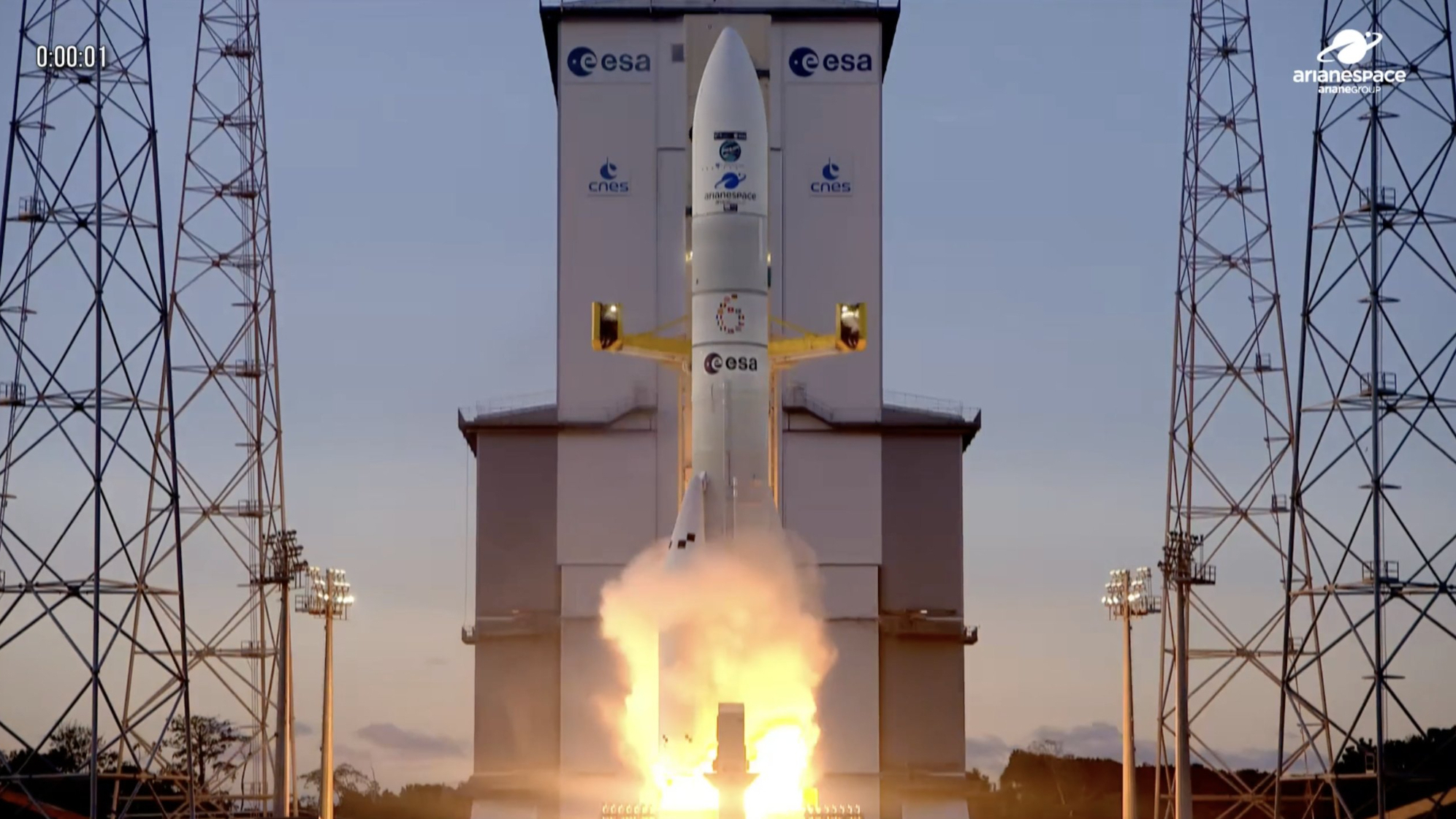Famed Horsehead Nebula Disappears in Infrared Photo

One of the most well-known nebulas of the night sky — the Horsehead nebula — all but disappears in a new infrared NASA image.
In the new photo, captured by NASA's Spitzer Space Telescope, the shadowy Horsehead nebula loses its distinctive shape because of the infrared light wavelength used to make the image penetrates cosmic dust.
It is that dust that gives the Horsehead nebula its "horse's head" shape. Without that telltale dust, only a "wispy arc” remains of the iconic space feature, according to NASA. [Strange Nebula Shapes: What Do You See?]
The main view in the new Spitzer image is the Orion Molecular Cloud Complex, the larger home of the Horsehead nebula. At the center of the image is the Flame nebula (NGC 2024) and to the right, just beside the Horsehead, is a smaller nebula called NGC 2023. Collectively, all of these areas are about 1,200 light-years from Earth.
"The two carved-out cavities of the Flame nebula and NGC 2023 were created by the destructive glare of recently formed massive stars within their confines," NASA officials wrote in a statement. "They can be seen tracing a spine of glowing dust that runs through the image."
Hotter wavelengths in the image are represented by blue and cyan (blue-green) light, which show wavelengths of 3.6 microns and 4.5 microns respectively. At the other end of the scale, cooler green and red colors show the nebulae's dust.
Part of the image includes data from NASA's Wide-field Infrared Survey Explorer (WISE), which observed in infrared wavelengths over the entire sky.
Breaking space news, the latest updates on rocket launches, skywatching events and more!
The Horsehead's official name is Barnard 33, or B33. It was first discovered in photographic plates in 1888 at the Harvard College Observatory.
The discoverer was Williamina Fleming, a maid of astronomy professor Edward Pickering. Pickering hired Fleming and several other women, who were known as "computers," to catalog images taken at the observatory. Fleming had a productive career, discovering 58 other nebulae, 10 novae and more than 300 variable stars.
The official name of the nebula comes from Edward Barnard, an American astronomer who photographed it from Lick Observatory in California. No one is sure when the name "Horsehead nebula" was first used, NASA officials said.
Follow Elizabeth Howell @howellspace, or Space.com @Spacedotcom. We're also on Facebook and Google+. Original article on Space.com.

Elizabeth Howell (she/her), Ph.D., was a staff writer in the spaceflight channel between 2022 and 2024 specializing in Canadian space news. She was contributing writer for Space.com for 10 years from 2012 to 2024. Elizabeth's reporting includes multiple exclusives with the White House, leading world coverage about a lost-and-found space tomato on the International Space Station, witnessing five human spaceflight launches on two continents, flying parabolic, working inside a spacesuit, and participating in a simulated Mars mission. Her latest book, "Why Am I Taller?" (ECW Press, 2022) is co-written with astronaut Dave Williams.
